Mexico’s Mixed Ground Crossings
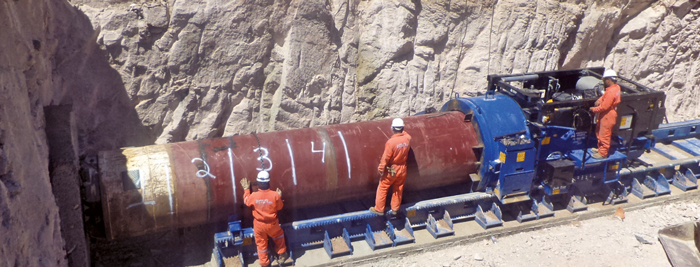
The Santa Maria River and a reservoir created by the newly constructed El Realito Dam are some of the most untouched and pristine water resources in arid Central Mexico. In order to supply potable water to a rapidly growing population, a mega pipeline is being built, stretching more than 80 miles between Guanajuato and the neighboring state of San Luis Potosí.
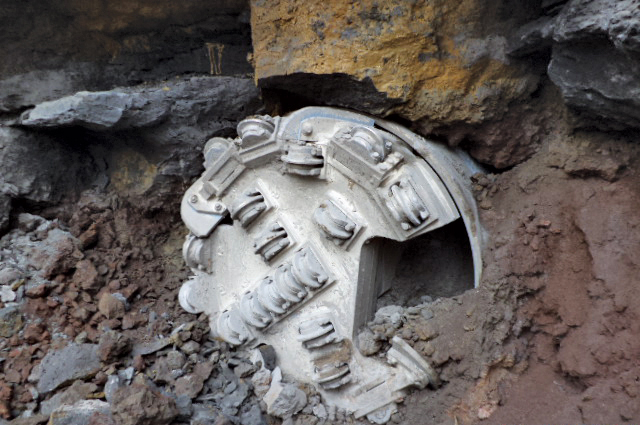
Moving Water to the People
Central Mexico’s population, located mostly in arid to semi-arid areas, has the highest growth rate in the country. Models project the growth to continue into 2030, and with it an ever increasing demand for resources. As a consequence, many of the aquifers that currently supply 60 percent of the water in the region have been declared over-exploited and a new water resource must be found. The massive El Realito pipeline, funded by Mexico’s National Water Commission (CONAGUA) is a move to supply up to 1.5 million people in two stages of construction.
Once complete, the aqueduct will extend from a dam in El Realito on the Santa Maria River to the City of San Luis Potosí in the state of the same name, where 264 gals of raw water per second will be treated at a water treatment plant. A second phase will bring the water to the city of Celaya in Guanajuato state and make the pipeline a total length of about 85 miles.
In 2009, a consortium comprising Mexico-based Ingenieros Civiles Asociados (ICA) and Aqualia, a subsidiary of Spanish company FCC, won the USD $183 million contract for construction. The project includes designing, building, financing and operating a drinking water treatment plant for 25 years, which is estimated to treat more than 22 million gals of drinking water daily. The scope of the contract includes the treatment plant, the El Realito aqueduct to transport the water from Santa Maria River to the states of San Luis Potosí and Guanajuato, three pumping stations, a buffer reservoir, five treated water reservoirs, access roads, four electric power substations, and a communications and control system. Construction of the massive scheme began in 2010.
The pipeline itself required a number of crossings below road, rail, and waterways, and local subcontractor INTUR was hired on to do 17 crossings using both pipe jacking and auger boring.
Mixed Ground Machines: A First for Mexico
Tests of the crossing sites revealed hard packed, consolidated cobbles similar to caliche with cemented and abrasive granite. INTUR owned a standard auger boring machine, and had done several previous projects using traditional “Christmas Tree” style cutterheads using bullet bits. Their experience with broken bits in harder rock conditions prompted them to look for something different on the abrasive hard rock crossings.
INTUR had heard of Robbins Small Boring Units (SBUs), and decided to give them a try. “We determined that the Small Boring Units would work perfectly on extremely hard materials, while we reserved the tungsten carbide bit heads for soft materials,” said Jorge Mirón González, director general of Ingeniería en Túneles y Redes, S.A. de C.V.
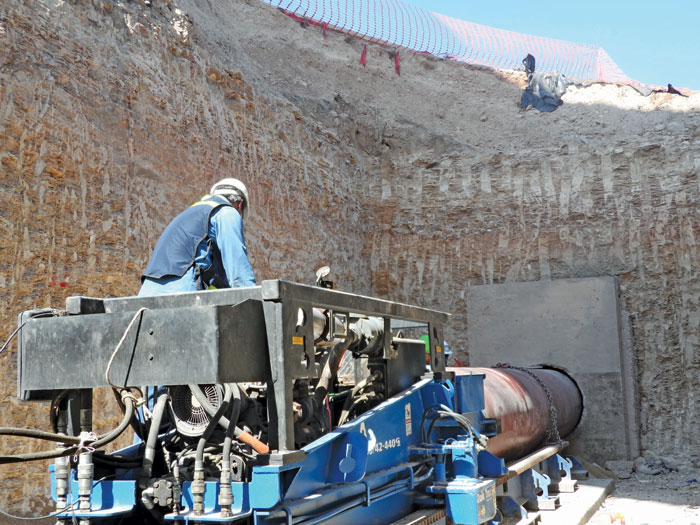
The company purchased a 54-in. and a 36-in. diameter SBU-A, for what would be the first use of the technology in Mexico. The SBUs were shipped from the Solon, Ohio-workshop to Laredo, Texas, where representatives from INTUR took over the transport process. Robbins Field Service and Sales staff from both the Robbins Mexico subsidiary and U.S. headquarters visited the jobsites to aid in training and proper setup. “Robbins USA gave us a number of technical courses on proper operation, maintenance and safety. The Robbins Mexico team worked closely with our staff to clear any technical questions, and translate and expand the explanations in Spanish. Collaboration and communication with both resulted in an increased productivity for our company,” said Mirón González.
SBU product manager Ken Clever visited several of the jobsites. “The contractor had a mix of both experienced and inexperienced personnel — one person had run an ABM before, while the others had not. Rock bores were new to them — their ABM bores in the past had been in dirt — so they all seemed pretty impressed when they saw the SBU cut through the rock.”
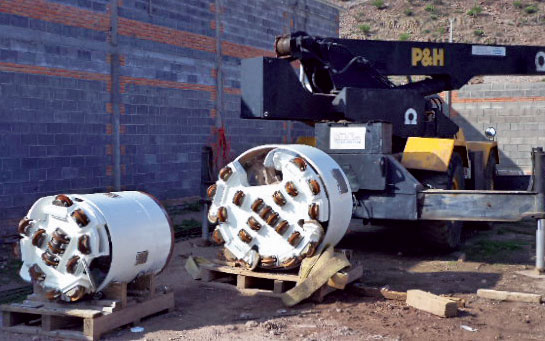
Crossing excavation began in early 2013 at multiple jobsites. “The locations of the sites were a challenge,” said Clever. “One of the projects was right downtown, but in Xalapa the jobsite was in the middle of nowhere going under a railroad. Crews were generally allowed to work from daylight to dark, but had to be off the jobsite at night because of safety concerns. There were also climate considerations—it was hot, humid, and at high altitude.”
Bore pits were hand excavated and were in stable enough material that shoring was not required. Concrete floors were poured, along with concrete blocks to push off of and headers to allow for a smooth startup. The SBU-As began excavation in the concrete block in order to set the proper line and grade. Crews then monitored line and grade using a water level, pulling the auger string periodically to make any necessary adjustments.
At the time of writing, INTUR still had one 36-in. railroad crossing and three 54-in. highway crossings of 500 ft each left to finish, while 13 crossings had already been completed.
When asked about the most challenging of the crossings, Mirón González cited two highway crossings in complex ground of 114 ft each. He described highly abrasive and variable ground conditions at these sites. Another challenging project was due to the site conditions — a cramped 200-ft long crossing with a small launch pit below a highway and with low-hanging power lines directly overhead.
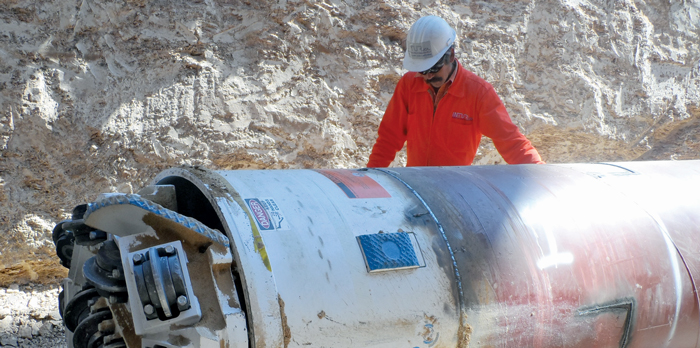
The contractor believes the use of the SBU machines has provided a significant competitive advantage in the Mexican trenchless market. “These are an advanced technology, with simple operation, and easy maintenance,” said Mirón González. “I wouldn’t hesitate to use them again.”
Desiree Willis is a technical writer at The Robbins Co.
